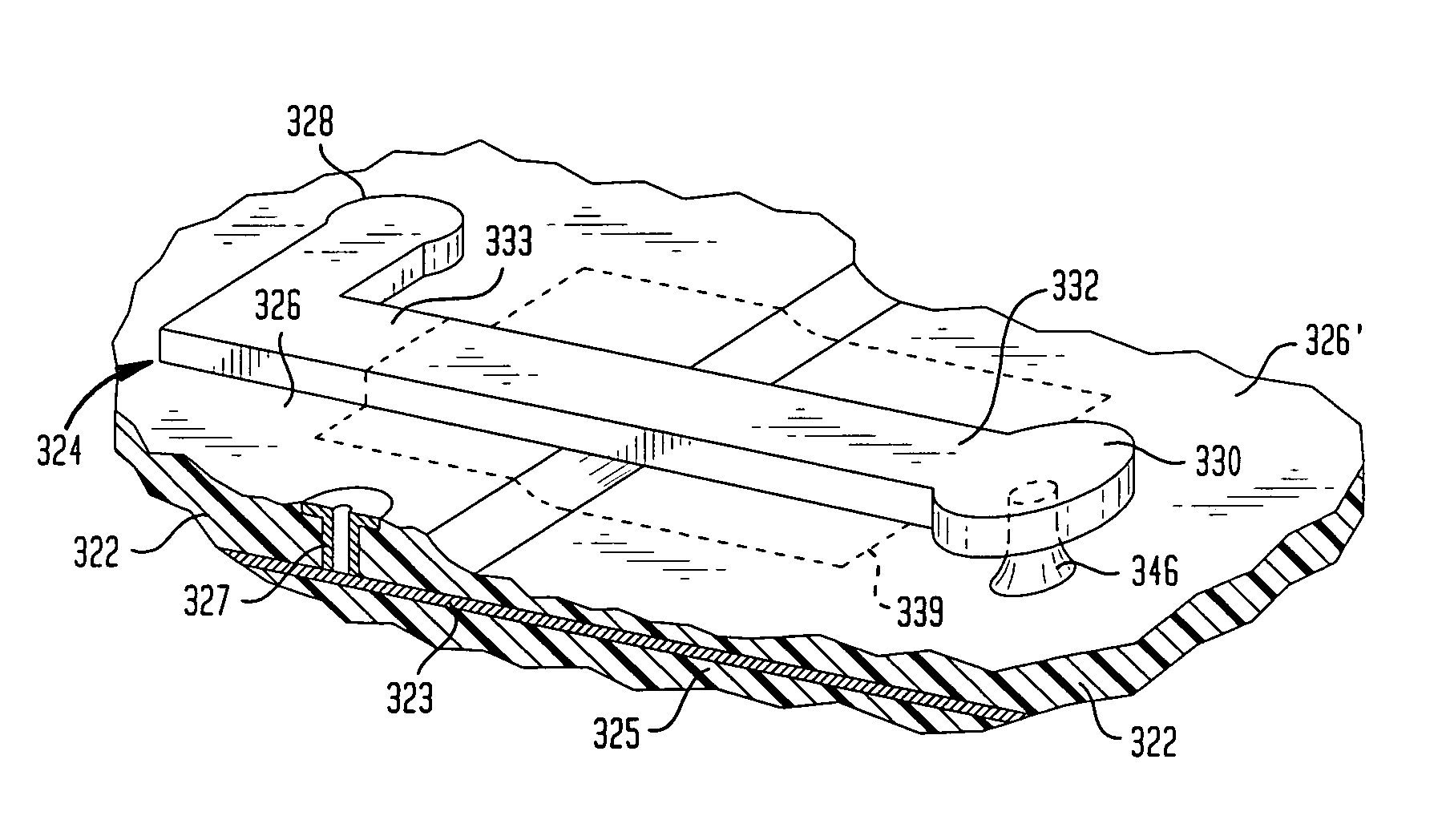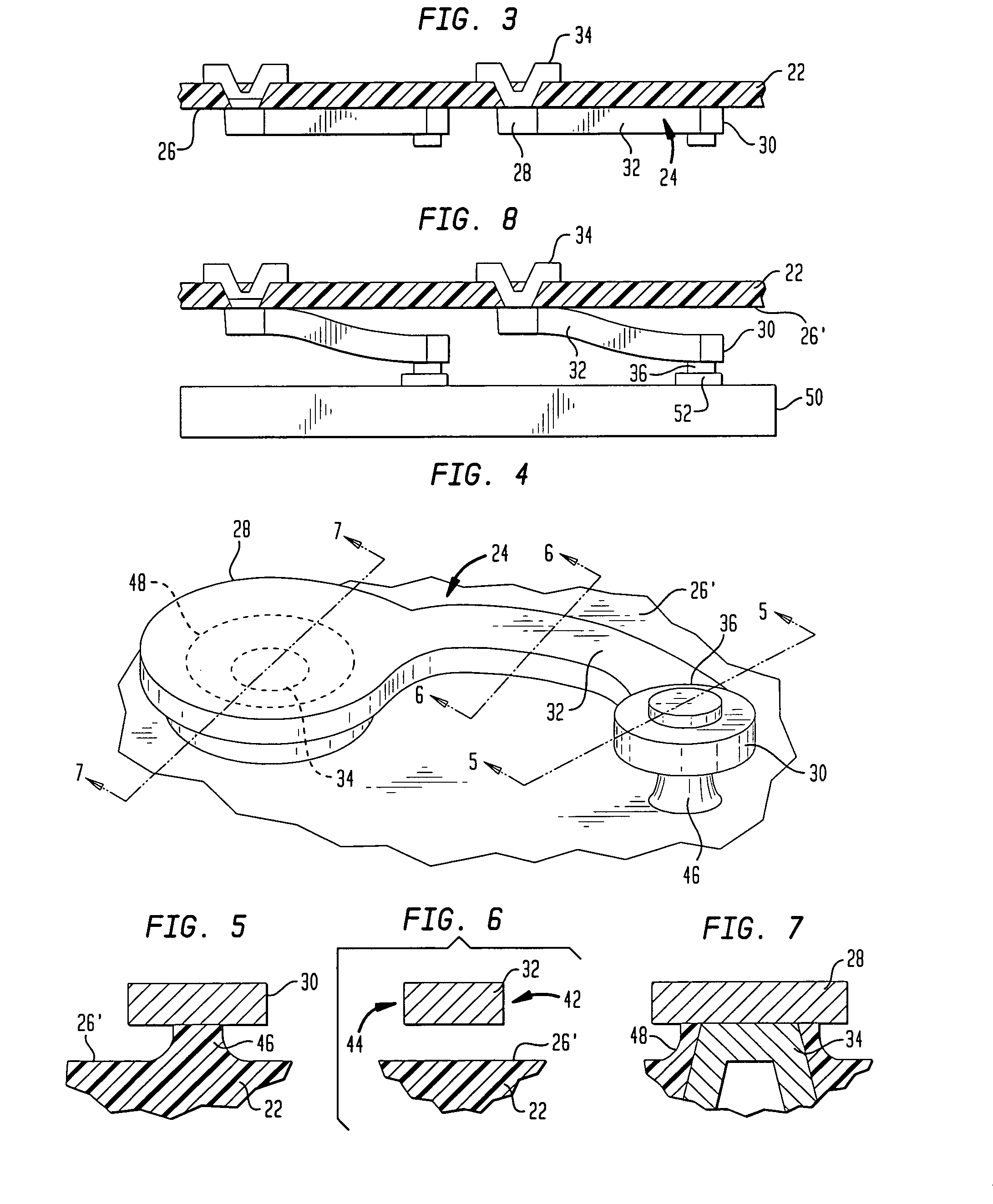Method of making components with releasable leads
- Summary
- Abstract
- Description
- Claims
- Application Information
AI Technical Summary
Benefits of technology
Problems solved by technology
Method used
Image
Examples
Embodiment Construction
[0042]A process in accordance with one embodiment of the invention begins with a starting structure 20 incorporating a dielectric layer, preferably a polymeric layer 22 and a plurality of leads 24 overlying a surface 26 of the dielectric layer. Each lead includes a first end 28, a second end 30 and a relatively narrow, elongated section 32 extending between the ends. The first end 28 of each lead is wider than elongated section 32, and the second end 30 of each lead is also wider than the elongated section. Stated another way, the minimum distance across each lead at the ends is greater than the minimum distance across the lead within elongated section 32. The leads adhere to the surface 26 of layer 22. Additionally, the first end 28 of each lead is physically attached to the polymeric layer by a metallic electrical conductor 34 extending into the polymeric layer at the first end.
[0043]Dielectric layer 22 may be formed by essentially any polymeric material which can be etched by the...
PUM
| Property | Measurement | Unit |
|---|---|---|
| Length | aaaaa | aaaaa |
| Dielectric polarization enthalpy | aaaaa | aaaaa |
| Electrical conductivity | aaaaa | aaaaa |
Abstract
Description
Claims
Application Information
 Login to View More
Login to View More - R&D
- Intellectual Property
- Life Sciences
- Materials
- Tech Scout
- Unparalleled Data Quality
- Higher Quality Content
- 60% Fewer Hallucinations
Browse by: Latest US Patents, China's latest patents, Technical Efficacy Thesaurus, Application Domain, Technology Topic, Popular Technical Reports.
© 2025 PatSnap. All rights reserved.Legal|Privacy policy|Modern Slavery Act Transparency Statement|Sitemap|About US| Contact US: help@patsnap.com



